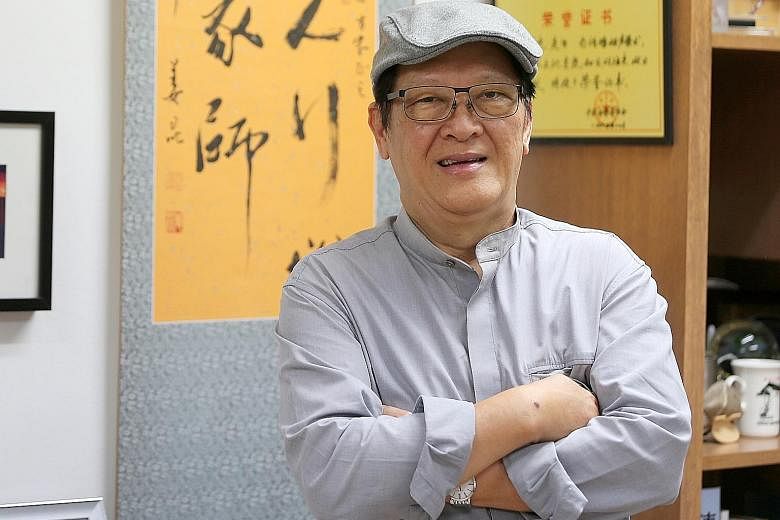Some students dread Chinese lessons, but a language centre here is hoping to change that by bringing fun and laughter into class.
Han Language Centre, which has over 20 branches here, incorporates stories, jokes and games into Chinese lessons, making them more lively and less mundane.
Apart from covering the school syllabus, it also uses material from newspapers, songs, movies and dramas.
Mr Ann Jong Juan, 70, who founded the centre in 1993, writes his own curriculum to make learning of the language more interesting for students. He also seeks feedback from his teachers to make it relevant.
"I wanted to go beyond the syllabus, and help students have fun in the process," he said. "When they are happy, they will be more engaged and will enjoy the language."
Mr Ann, formerly a specialist writer for Chinese teaching materials with the Education Ministry, said lessons should be taught in a way that appeals to students.
He hopes such classes will also help them discover their culture and roots. For instance, the lessons may cover how some words come about.
"We want them to find joy in coming here to learn, and not see it as a chore," Mr Ann said.
"Besides enjoying themselves, we want them to leave the centre having learnt something."
His centre offers a range of programmes from tuition to courses to prepare students for national exams, such as the Primary School Leaving Examination and O levels.
The centre, which has some 4,500 students, boasts about 200 teachers, who receive training to help them engage students, among others.
"It is not just the teaching of content, but also about inculcating the joy of learning," said Mr Ann, who is also the centre's principal.
He noted that children hardly use the Chinese language beyond their classrooms these days.
"They have no chance to use the language. To improve, they must practise it," he said, adding that the environment they are immersed in plays a big part.
Soon, the centre will be starting a kindergarten, known as Han Junior, which will teach kids through play. Unlike many kindergartens here, Han Junior will use Chinese as a language medium for teaching most of its lessons.
Mr Ann, who was awarded the Cultural Medallion for drama in 1990 in recognition of his contributions to Singapore theatre, said lessons at the kindergarten will begin with fun activities such as games.
But Mr Ann is not stopping there.
He has plans to roll out adult courses, such as culture and history classes for seniors and conversational Mandarin classes for those who have lost touch with the language. Over the years, Mr Ann has seen more non-Chinese, including Malays and Indians, picking up the language at his centre, which is also exploring an expansion overseas.
"They see that the Chinese language has importance in the future," he said. "Hopefully, more people, young or old, can find a reason to learn the language."
Parent Sewan Lee, 37, who has two sons aged three and five, has been sending his older child to the language centre since last year.
The supply chain project manager, said the boy, who is of Korean descent, wanted to learn Chinese and has since developed an interest in it.
"In class, he learns Chinese through songs, books and other fun activities," Mr Lee added. "He loves to go to the centre to learn more about the language."


